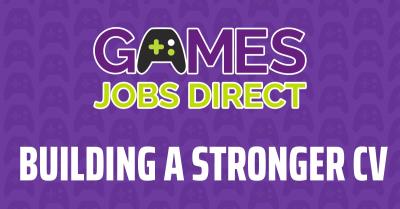29 Oct 2020

The presentation
It’s important to remember that your CV is an overview of you and your skills professionally, academically and personally (not too personal). The idea is to highlight your skills and talents that show you have what it takes to do the job, but also get on with the team.
Whilst there aren’t many strict rules regarding your CV, it’s usually safe to stick with the following;
Structuring your CV
It’s advised that you split your CV into various sections, breaking down particular areas at a time will make it easier to focus on areas that you may wish to discuss in interview. Below are the recommended sections.
Your contact details
For your introduction, write your full name, email address and contact number centralised at the top of your CV.
Your introduction
Found as the first paragraph under your contact details, your introduction should be a brief introduction of yourself (no longer that 200 words). Make sure you highlight the skillsets you have that are relevant to the role you’re applying to. This section will give any employer a quick summary of you, your skills and your experience.
Work Experience
This is one of the most important parts of your CV. This section will provide the information needed to match up if you have the relevant experience.
When entering your Work Experience, you should always start from the most recent role and work backwards. The layout should be; Company name above the previous job title followed by the dates in which you worked in that particular role. (like below)
Company name
Job Title
Dates employed
It’s recommended that you give a brief summary of your responsibilities and also any projects/products you have worked on.
To avoid making your CV too long, it may be worth using bullet points to highlight any transferable skills that may fit in with the role you’re applying for that you may have gained from further employment spanning past 3 years. This area is the place to really show that you have the correct experience for the role.
It’s always worth checking your dates – employers may want to know any reasons behind a break in your timeline.
Education
Just as your work experience, your education should always start with the most recent first and work backwards. This section doesn’t need to be very long. It should be short and concise. Try to keep this section reserved for only academic qualifications as you can use the ‘Skills” section later for any role specific certificates.
Skills and Certificates
This section is often forgotten about but can often be the dealbreaker for many. You can imagine that the hiring manager will get many CV’s, all with very similar noted experience. This section allows you to stand out and get the competitive edge when trying to show why you are better than any other candidate.
In this section it is important to highlight any skills and achievements you may have. Things such as Javascript skills, another language, and any other job specific skills you may have mastered are always something that should be placed in this area.
You can present your skills and certificates in bullet point format for a clean and direct layout. It’s worth thinking of the skills that you do have, and those that are relevant to the role. Don’t make the list too big, but also, don’t skip on the skills that are beneficial to know for the job.
References
In this section, you can either provide 2/3 professional references or simply state “references available on request”.
There's quite a bit here for you to digest. we hope that we've helped with some of these tips. There is one last thing we must stress!
DON'T FORGET YOUR PORTFOLIO
We hope that this list helped you with the required content and structure that’s preferred in an up to date CV.
We want to wish you all the best in your job search.
Want to be found by studios? Simply make sure your profile is complete and that your profile is set to visible!
Follow us on Twitter @GamesJobsDirect for industry news and up to date active jobs!
Keep Calm and waka waka...